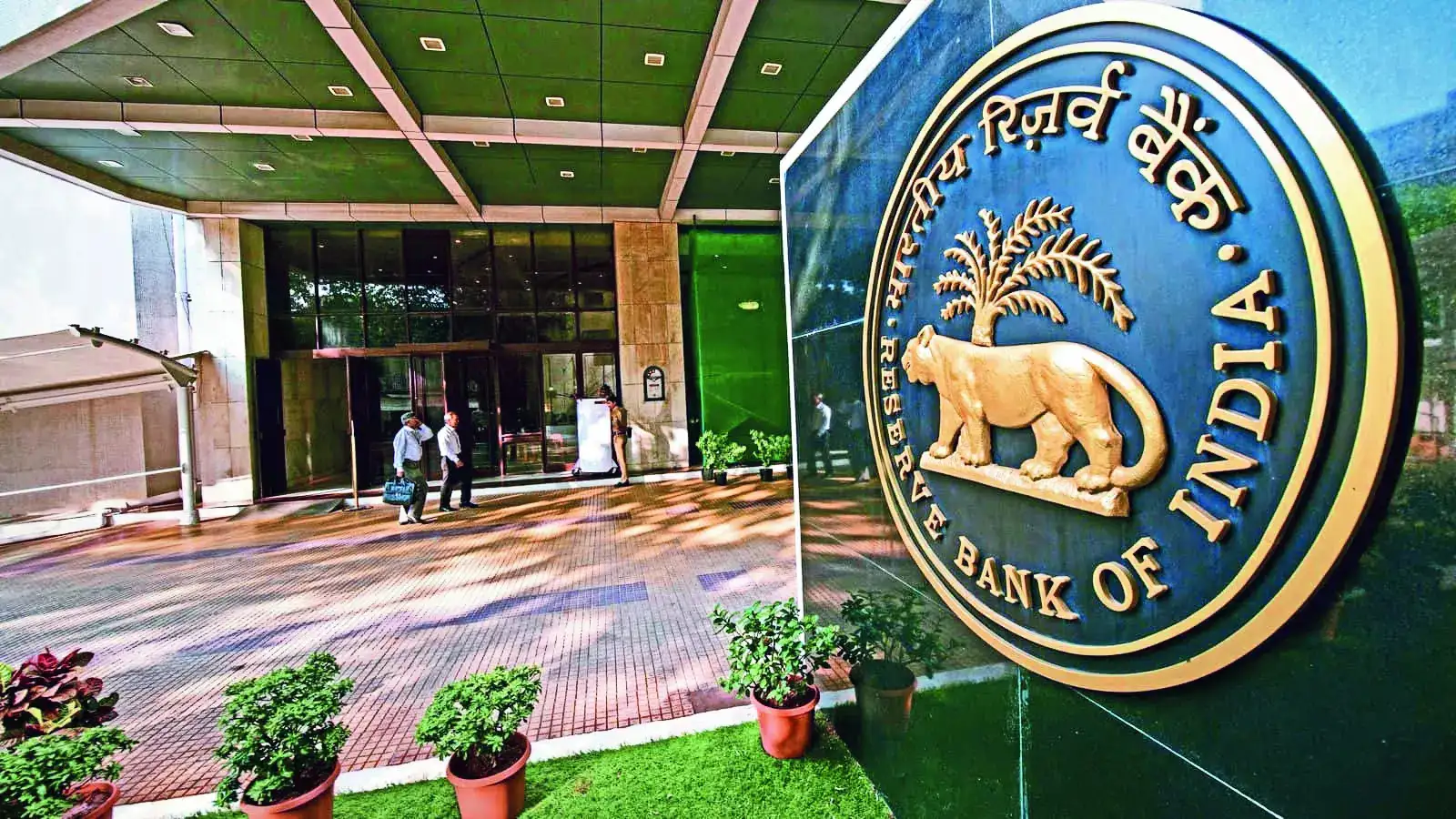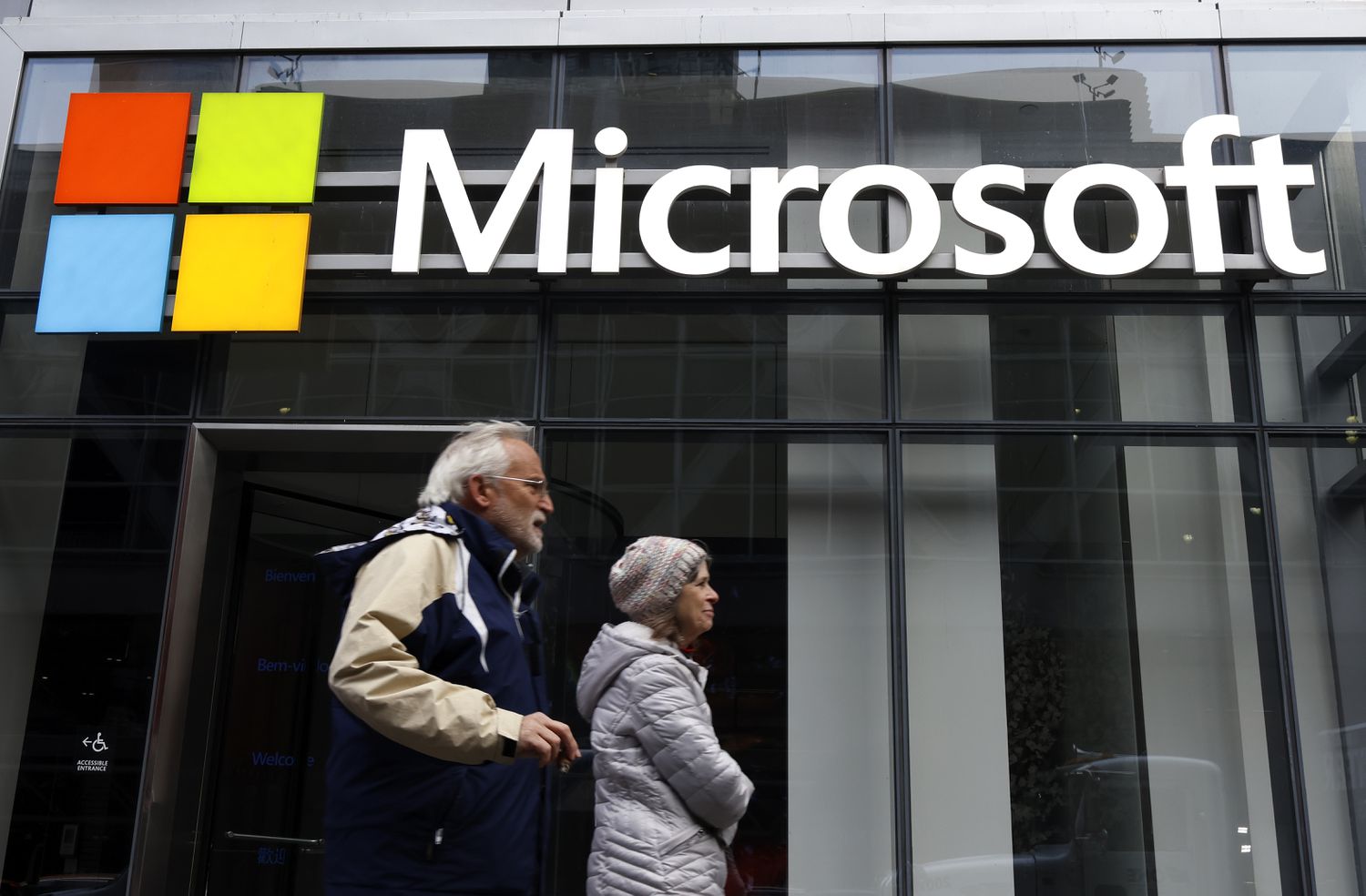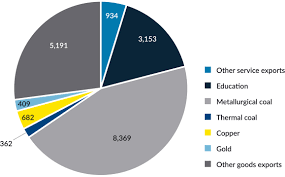Top Trending Acquisitions & Mergers News & Highlights


This Diwali, OOH ad sales increase by 20%, while data-driven campaigns increase DOOH share by 24%.
This year's Diwali brilliance extended beyond diyas and fireworks, illuminating billboards, computer screens, and Indian cityscapes. Brands transformed the outdoors into a canvas of color, emotion, and commerce by painting the streets with joyous tales in both Tier-II communities and busy metropolises. The outcome? For the Out-of-Home (OOH) advertising sector in India, this was one of the busiest holiday seasons to date. Due to early holiday planning, daring creative executions, and a swift transition to digital and data-led outdoor solutions, the industry saw impressive double-digit growth as consumer sentiment skyrocketed and advertiser confidence returned in full force.The OOH sector has grown significantly over this holiday season, which is indicative of both the restored vigor in consumer markets and economic optimism. Vaishal Dalal, co-founder of Excellent Publicity, emphasized this momentum and noted that the industry's growth trajectory is still strong. This holiday season, the OOH sector has experienced strong double-digit growth. OOH advertising revenues increased steadily across the country, from ₹4,140 crore in 2023 to ₹4,650 crore in 2024, and are expected to surpass ₹5,200 crore in 2025. The entire OOH ad expenditure increased by more than 15–20% year over year during Diwali, thanks to robust seasonal campaigns in industries including retail, FMCG, consumer durables, automotive, and BFSI."Internal estimates indicate a ~40% YoY increase in Diwali-related OOH bookings at Excellent Publicity, surpassing the industry average," he added. Early festive planning, strong advertiser confidence, and nearly full occupancy across premium billboard sites were credited with this spike.Vikas Nowal, CEO of Interspace Communications, echoed this pattern, stating that the company also experienced a notable Christmas bump. Our OOH company has performed well throughout the Diwali holiday season this year, with a projected 20% increase in sales over the previous year. Higher consumer involvement and greater advertising confidence throughout the festival period are reflected in this uptick," he continued. With companies aiming for both quantifiable engagement and widespread effect, both leaders concur that the OOH medium has become one of the most dependable and prominent options for festive storytelling.
Published 21 Oct 2025 07:55 PM


To improve hybrid cloud services, CCI approves Capgemini's complete acquisition of Singapore-based Cloud4C.
In order to strengthen its hybrid cloud and AI-driven enterprise products, the French IT giant, which has a sizable delivery base in India, had announced the deal in August.The request by French IT services giant Capgemini to fully purchase Singapore-based Cloud4C was accepted by the Competition Commission of India (CCI) on Tuesday.The move followed Capgemini's announcement in August of this year that it had inked a deal to buy Cloud4C, a pioneer in hybrid cloud platform services.According to an announcement from CCI, the proposed combination is related to Capgemini SE's purchase of all shares of Cloud4C Services Pte Ltd (Target 1) and Cloud4C Services Pvt Ltd (Target 2). The Capgemini group's ultimate parent company is Capgemini SE. In a post on X, the regulator stated, "Commission approves proposed acquisition of Cloud4C Services Pte Ltd and Cloud4C Services Pvt Ltd by Capgemini SE."Capgemini, a prominent multinational in consulting, digital transformation, technology, and engineering services, has its headquarters in Paris. One of the company's biggest delivery bases worldwide is India, where it is well-represented.
Published 15 Oct 2025 05:23 PM


Why the largest automakers in the world are reconsidering their
The electric vehicle (EV) boom is slowing down globally. As governmental changes, costs, and consumer reluctance redefine the industry's future, major automakers are reducing their production and adopting hybrids after years of bold all-electric commitments.Although growth will be uneven, EVs will account for one in four worldwide auto sales this year, according to BloombergNEF's annual Electric Vehicle Outlook report. With more than half of all new automobiles sold in China being electric, the U.S. and Europe are facing declining demand and political unpredictability. In the meantime, reasonably priced EVs are driving historic growth in emerging economies like Vietnam and Thailand.Automakers are shifting their tactics to include hybrids and plug-in hybrids after previously promising entirely electric lines. A reconsideration is being compelled by declining sales, exorbitant battery prices, and inadequate infrastructure for charging. 1. A slower rate of consumer acceptance Mass-market consumers are still wary about EVs, despite early adopters' enthusiastic embrace. Enthusiasm has been tempered by range concern, expensive upfront costs, and uneven charging infrastructure, particularly in nations with weak charging networks or growing electricity bills. 2. Expensive batteries and a lack of materials The price of lithium, nickel, and cobalt—essential components of EV batteries—has fluctuated. Profit margins have been squeezed by this unpredictability, which has also reduced the financial appeal of EV production. Costs are still high when compared to internal combustion engine (ICE) and hybrid vehicles, even with the emergence of local battery plants. 3. Gaps in charging infrastructure The charging network is still sporadic outside of China and several regions of Europe. Long charging durations and a lack of fast-charging stations continue to deter consumers in the US and India. Automakers are concerned about generating EVs more quickly than the infrastructure can handle.
Published 14 Oct 2025 09:20 PM


SBI looks to focus on deal financing within its own territory, as a draft regulation from the RBI proposes an even playing field for Indian banks
The State Bank of India (SBI), which has long funded the overseas acquisitions of Indian companies, believes it is prepared to support domestic mergers and acquisitions (M&As) as the Reserve Bank of India (RBI) looks into the possibility of allowing domestic lenders to do so.“Our outbound M&A financing involves Indian corporations acquiring foreign entities. Banks such as SBI possess extensive knowledge of acquisition financing,” C.S. Setty, chairman of the largest lender in the country, informed reporters during the Global Fintech Fest in Mumbai on Wednesday.Amitabh Chaudhry, the managing director and CEO of Axis Bank, stated on Tuesday that his bank aims not only to take part but also to challenge foreign banks that have been funding these acquisitions for several years, offering them “a run for their money.”On 1 October, in the course of detailing its review of monetary policy, the RBI unveiled a draft framework aimed at allowing domestic banks to underwrite acquisition financing for Indian corporates—something that has been desired by the banking sector for a long time. Regulatory constraints had effectively prohibited Indian banks from providing loans for share purchases in acquisition deals up to this point. Foreign banks, non-bank financial institutions, bond markets, and private equity largely took on those tasks.As the RBI aims to revise the regulations, domestic banks might soon benefit from a level playing field that is conditioned on safeguards, credit limits, and oversight standards. Market participants think this action could reveal value in the corporate funding life cycle. “Im Zuge des Geschäftsjahres 2024 beliefen sich die Werte von M&A-Transaktionen auf mehr als 120 Milliarden US-Dollar (ungefähr ₹10 lakh crore bzw. trillion). As per a note from SBI Research Ecowrap following the RBI's announcement regarding draft rules, if we consider that the debt component accounts for 40% of M&A and that banks could finance 30% of this, it results in a possible credit growth of ₹1.2 lakh crore.
Published 09 Oct 2025 04:27 PM


Acquisitions & Mergers
Acquisitions & Mergers are the latest trend in the globe.


Max Healthcare acquires Nagpur-based Alexis Hospital for Rs 412 crore
"The acquisition of Alexis Hospital is in line with our vision to expand our footprint in tier-2 cities with abundance of clinical talent and developed private healthcare infrastructure," Max Healthcare Institute Chairman and Managing Director Abhay Soi said.The facility has potential to increase its bed capacity from 200 operational beds to 340 beds after necessary regulatory approvals.Max Healthcare Institute on Friday said it has acquired Nagpur-based Alexis Multi-Speciality Hospital Pvt Ltd for Rs 412 crore. The 200-bed hospital is set up on a land parcel of 2-acre at Mankapur, north of Nagpur.Alexis Hospital acquisition will strengthen company's presence in Maharashtra region, he added.Shares of Max Healthcare were trading at a loss of 0.42 per cent at Rs 866.4 apiece on the BSE.


Max Healthcare strengthens western presence by acquiring Alexis multi-specialty hospital
Max Healthcare Institute Ltd has acquired 100 per cent stake in Alexis Multi-Speciality Hospital Private Ltd (Alexis) for an enterprise value of ₹412 crore, strengthening its presence in the western region. The 200-bedded hospital, owned and operated by Alexis is a JCI-accredited facility located at Mankapur, North of Nagpur - an upmarket residential and commercial hub, a note from the hospital chain said. The bed capacity can be expanded to about 340 beds in view of the availability of the floor area ratio (FAR) for the given land and the strength of the existing structure, it added. Abhay Soi, Chairman and Managing Director, Max Healthcare said, “The acquisition of Alexis Hospital is in line with our vision to expand our footprint in tier-2 cities with abundance of clinical talent and developed private healthcare infrastructure. Alexis Hospital acquisition will strengthen our presence in Maharashtra region. With this addition, we now have 4 JCI-accredited facilities in our network and we look forward to bringing the high-end quality care to people of the region.”The hospital offers multidisciplinary care in gastroenterology, neurosurgery, cardiology, transplants and related diagnostic facilities, among others. It is also equipped with high end bio medical equipment like Varian True Beam LINAC, 128 Slice CT Scan, 3 Tesla MRI, Digital X Ray, ARTIS Q Cath Lab, etc, it added. Further, the hospital medical programme could be strengthened in surgical specialties like urology, oncology and neurosciences leading to improvement in average revenue per occupied bed (ARPOB) and occupied bed days (OBD), the note said. The current run rate of revenue and EBITDA for the hospital is ₹150 crore and ₹25 crore respectively, it added.Nagpur is a fast growing city with a population density of 47 lakh and high literacy rate, and is located in the heart of Maharashtra, it said. Further the city has availability of experienced medical talent owing to presence of government hospitals, medical colleges and private healthcare players, it added. Zanubia Shams, Co-Chairperson of Zulekha Healthcare Group (Promoter of Alexis Hospital, Nagpur), said, their decision to consider divesting this business was driven by their strategic focus on its healthcare businesses in the UAE and Gulf.


News Corp Stock Rises as Surge in Digital Subs Offsets Weak Ad Revenue
News Corp (NWS) shares moved higher ahead of Thursday’s opening bell after The Wall Street Journal parent surpassed quarterly earnings and sales estimates, spearheaded by growth in the company’s Dow Jones business information arm. The New York-based company synonymous with Australian media mogul Rupert Murdoch posted fiscal second quarter adjusted earnings of 26 cents per share compared to analysts’ average estimate of 21 cents a share. Net revenue for the period also came in better than expected, growing 3% to $2.59 billion, ahead of the $2.55 billion consensus mark. The media conglomerate’s Dow Jones segment, which houses leading financial publications such as The Wall Street Journal, Barron's, and Market Watch booked $584 million in revenue for the December quarter, representing a 4% increase from the same quarter in 2022 as customers sought the unit’s bundled subscription options. News Corp’s digital real-estate services group also performed strongly, recording fiscal second-quarter revenue of $419 million, up 9% year-over-year (YOY). In somewhat of a surprise, the company’s book publishing segment, which owns prominent publisher HarperCollins, also performed well during the quarter, posting revenue growth of 4% to $550 million.However, News Corp’s advertising revenues fell by 5.6% to $438 million from the corresponding year’s quarter. CEO Robert Thomson said the company continued to benefit from its “strategic shift to digital and subscription revenues, and away from sometimes volatile advertising revenues.” On the artificial intelligence (AI) front, Thomson said that the media giant intends to be “a core content provider for generative AI companies who need the highest quality timely content to ensure the relevance of their products.”


US Economy Today: Federal Reserve Officials Beat the Confidence Drum
Welcome to Investopedia's economics live blog, where we'll explain what the day's news says about the state of the U.S. economy and how that's likely to affect your finances. Here we will compile data releases, economic reports, quotes from expert sources and anything else that helps explain economic issues and why they matter to you. Today, another batch of Federal Reserve officials will offer their opinions on the Open Market Committee's path forward.Boston Fed President Susan Collins was another in the line of Federal Reserve officials who broadly said they needed more “confidence” that inflation is sustainably declining before cutting interest rates. She did, however, lay out a few fundamental indicators she is watching. In remarks to the Boston Economic Club, Collins said housing inflation was taking longer to come down than other categories and she wants to see more progress there. Consumers’ inflation expectations needed to remain “well anchored." Recent consumer confidence surveys have jumped as people start to feel better about inflation and the economy. Collins also said she is closely monitoring wages, pointing to data from Boston Fed economists. The data suggests “there is room for wages to catch up and continue increasing at a healthy pace for some time without necessarily spurring inflationary pressures” due to gains in productivity. However, she was looking to see declines in labor demand to help bring better balance. Employers continued to add more jobs than anticipated in January, while wages also surged.Inflation should continue to decline, so long as consumers begin to put away their wallets, Fed Governor Adriana Kugler told the Brookings Institute Wednesday.


Veracyte Completes Acquisition of C2i Genomics
SOUTH SAN FRANCISCO, Calif.--(BUSINESS WIRE)--Veracyte, Inc. (Nasdaq: VCYT), a leading cancer diagnostics company, today announced it has completed its acquisition of C2i Genomics, Inc., adding whole-genome minimal residual disease (MRD) capabilities to its novel diagnostics platform and expanding the company’s ability to serve patients across the cancer care continuum. Bringing C2i Genomics’ technology and team into Veracyte will allow us to make significant advances in our vision to transform cancer care for patients all over the world,” said Marc Stapley, Veracyte’s chief executive officer. “C2i’s novel artificial intelligence-driven, whole-genome MRD platform will enable us to expand the value we deliver to clinicians and their patients, beginning with early cancer diagnosis and risk assessment, and now moving further along the patient journey into treatment monitoring and disease recurrence testing. C2i’s approach to MRD will expand the set of data and insights that can follow each patient throughout their care, and will also fuel new innovation.” Veracyte’s first application of C2i Genomics’ technology will be a muscle-invasive bladder cancer MRD test, where the company plans to leverage its strong urology commercial channel and a clear pathway to expected reimbursement. The company plans to develop further MRD tests in several of its focused indications. Veracyte (Nasdaq: VCYT) is a global diagnostics company whose vision is to transform cancer care for patients all over the world. We empower clinicians with the high-value insights they need to guide and assure patients at pivotal moments in the race to diagnose and treat cancer. Our Veracyte Diagnostics Platform delivers high-performing cancer tests that are fueled by broad genomic and clinical data, deep bioinformatic and AI capabilities, and a powerful evidence-generation engine, which ultimately drives durable reimbursement and guideline inclusion for our tests, along with new insights to support continued innovation and pipeline development. For more information, please visit www.veracyte.com and follow the company on Twitter (@veracyte).


Can go to NCLT to enforce Sony merger deal after SIAC rejects petition: Zee
Zee Entertainment can ask an Indian tribunal to enforce a $10 billion merger with Sony's Indian unit after a Singapore arbitration centre rejected an emergency petition by the Japanese company for a stay of proceedings, Zee said on Sunday. Sony scrapped the merger on Jan. 22, ending a deal that could have created one of India's biggest TV broadcasters, claiming breaches of contract. Zee rejected the claims and asked an Indian tribunal to order Sony to honour its obligations to complete the merger. The Singapore International Arbitration Centre (SIAC) said it had no jurisdiction or authority to block Zee from approaching the Indian tribunal, adding the merger fell within the purview of the National Company Law Tribunal of India, Zee said in filings to Indian stock exchanges.Sony said in a statement that it was disappointed by the decision but it was a procedural one ruling only whether Zee could pursue its application with the company law tribunal. We will continue to vigorously arbitrate the matter in Singapore in front of a full SIAC tribunal and pursue SPNI's (Sony India) right to terminate the merger agreement and seek a termination fee and other remedies," it added."We remain confident in the merits of our position in both Singapore and India." The Zee-Sony merger, in the works for two years, would have created an Indian TV juggernaut with more than 90 channels across sports, entertainment and news that would have competed with the likes of Walt Disney, and billionaire Mukesh Ambani's Reliance. In terminating the merger, Sony also cited alleged failure by the Indian media company to meet some financial terms of the deal, a dispute over compliance issues including disposal of some Russian assets and its $1.4 billion Disney cricket rights deal, Reuters reported last week."


Zee claims ₹700 crore in costs from Sony for fulfilling merger conditions
In the upcoming proceedings at the National Company Law Tribunal, Zee plans to argue that, “It has incurred/provided for in books of account approximately ₹700 crores towards divestment of businesses, settlement of frivolous claims (against which Zee had a strong legal case), settlement of guarantees, procuring tail insurance to Sony’s satisfaction, discontinuing several businesses on Sony’s instructions and more.”Zee intends to counter Sony’s termination notice claiming $90 million in damages from it citing alleged breaches by the Indian company. Zee has categorically denied that there has been any material adverse effect in terms of the merger agreement as indicated in Sony’s termination notice. According to legal sources, Zee will show that it had multiple discussions with Sony, including discussions on the joint business plan where month-wise profit and loss, cash flows were discussed and provided to Sony. Zee was in constant discussions with Sony for a substantial period of time to bring the merger to fruition. Sony consistently advised and instructed Zee to take specific steps in order to close the merger faster and Zee undertook those steps as advised and instructed by Sony. Not only did Zee spend considerable effort and time in taking those steps, but it has also incurred significant monetary costs to satisfy Sony,” the document accessed from legal sources said. It also said that Zee informed Sony that certain actions required to fulfil these conditions (e.g., divestments) are permanent, irrevocable, and irreversible steps which are being undertaken solely for the merger. Sony had requested Zee to undertake actions and steps outside the scope of the agreement such as provision losses in relation to its arrangement with Disney Star which would result in booking of substantial losses [as early as March 2023], even before Zee executed this agreement with Disney Star. Availing of this debt is specifically exempted under the merger agreement. Sony was aware of the agreement through public disclosures and specific details were provided to them. Moreover, Sony had requested Zee to proceed with the agreement regardless of the fact that Star was yet to give its waiver for the provision of a corporate guarantee from the ultimate parent entity of Sony,” said a source close to the development.


Zee claims ₹700 crore in costs from Sony for fulfilling merger conditions
In the upcoming proceedings at the National Company Law Tribunal, Zee plans to argue that, “It has incurred/provided for in books of account approximately ₹700 crores towards divestment of businesses, settlement of frivolous claims (against which Zee had a strong legal case), settlement of guarantees, procuring tail insurance to Sony’s satisfaction, discontinuing several businesses on Sony’s instructions and more.”Zee intends to counter Sony’s termination notice claiming $90 million in damages from it citing alleged breaches by the Indian company. Zee has categorically denied that there has been any material adverse effect in terms of the merger agreement as indicated in Sony’s termination notice. According to legal sources, Zee will show that it had multiple discussions with Sony, including discussions on the joint business plan where month-wise profit and loss, cash flows were discussed and provided to Sony. Zee was in constant discussions with Sony for a substantial period of time to bring the merger to fruition. Sony consistently advised and instructed Zee to take specific steps in order to close the merger faster and Zee undertook those steps as advised and instructed by Sony. Not only did Zee spend considerable effort and time in taking those steps, but it has also incurred significant monetary costs to satisfy Sony,” the document accessed from legal sources said. It also said that Zee informed Sony that certain actions required to fulfil these conditions (e.g., divestments) are permanent, irrevocable, and irreversible steps which are being undertaken solely for the merger. Sony had requested Zee to undertake actions and steps outside the scope of the agreement such as provision losses in relation to its arrangement with Disney Star which would result in booking of substantial losses [as early as March 2023], even before Zee executed this agreement with Disney Star. Availing of this debt is specifically exempted under the merger agreement. Sony was aware of the agreement through public disclosures and specific details were provided to them. Moreover, Sony had requested Zee to proceed with the agreement regardless of the fact that Star was yet to give its waiver for the provision of a corporate guarantee from the ultimate parent entity of Sony,” said a source close to the development.


FM Nirmala Sithraman keeps tax slabs unchanged
As expected and in relief for the citizens, the central government neither tweaked nor put any additional tax burden on citizens, in the interim Budget for 2024-25 tabled by Union Finance Minister Nirmala Sitharaman. "Keeping with the convention, I do not propose to make any changes relating to taxation and propose to retain the same tax rates for direct taxes and indirect taxes including import duties," Sitharaman said in her Budget speech on Thursday. However, certain tax benefits to start-ups and investments made by sovereign wealth or pension funds as well as tax exemption on certain income of some IFSC units are expiring in March 2024. To provide continuity in taxation, she proposed to extend the date by another year.Moreover, in line with the government's vision to improve ease of living and ease of doing business, she announced to improve tax-payer services. "There are a large number of petty, non-verified, non-reconciled or disputed direct tax demands, many of them dating as far back as the year 1962, which continue to remain on the books, causing anxiety to honest tax-payers and hindering refunds of subsequent years," she said.She proposed to withdraw such outstanding direct tax demands up to Rs 25,000 for the period up to financial year 2009-10 and up to Rs 10,000 for financial years 2010-11 to 2014-15. "This is expected to benefit about a crore tax-payers," she added.Presenting the Union Budget 2023, Sitharaman on Thursday pegged the fiscal deficit target for 2024-25 at 5.1% of gross domestic product (GDP). In 2023-24, the government pegged the fiscal deficit target for 2023-24 at 5.9% of gross domestic product (GDP). Today, Sitharaman said that the fiscal deficit of 2023-24 was downwardly revised to 5.8%. The difference between total revenue and total expenditure of the government is termed as fiscal deficit. It is an indication of the total borrowings that may be needed by the government.The government intends to bring the fiscal deficit below 4.5% of GDP by the financial year 2025-26.The government intends to bring the fiscal deficit below 4.5% of GDP by the financial year 2025-26. A capital expenditure,or capex, is used to set up long-term physical or fixed assets.


AMD Stock Slumps on Disappointing Sales Forecast—Key Price Levels to Watch
Despite surpassing fourth-quarter revenue estimates, Advanced Micro Devices (AMD) shares fell sharply in pre-market trading Wednesday after the chipmaker issued current-quarter sales guidance that missed analysts’ expectations amid softening demand for its PC chips and central processing units (CPUs).The Santa Clara, California company said it expects first-quarter sales of about $5.4 billion, plus or minus $300 million, falling short of the $5.73 billion mark Wall Street was looking for. AMD projects its PC chips business to record a decline in sales grow from the December quarter while anticipating its data center revenue to remain flat in the period, with growth in graphics processing units (GPUs) sales helping to offset slowing CPU demand. The company said it now sees 2024 AI GPU chip sales of $3.5 billion, up substantially from its earlier forecast of $2 billion. “In cloud, we are working closely with Microsoft (MSFT), Oracle (ORCL), Meta (META) and other large cloud customers on Instinct GPU deployments powering both their internal AI workloads and external offerings,” AMD CEO Lisa Su said during the company’s earnings call.2 In the fourth quarter, the company posted revenue of $6.17 billion, which came in slightly above the $6.12 billion consensus analysts had expected. The top line received a boost from the company’s data center and client segments, which reported respective year-over-year (YOY) growth of 38% and 62% due to increasing demand for it Instinct graphics processors used for AI and recent chip launches.Since briefly dipping below the 200-day moving average in late October, AMD shares have tracked steadily higher, with trading volume increasing in the lead up to the company’s earnings. If the stock undergoes an earnings-driven retracement, keep an eye on a three month trendline that may potentially provide support around $160. A failure to hold this key chart level could mark the start of a possible trend reversal.


Aim to double AUM to Rs 20,000 crore by FY27, says HomeFirst MD & CEO
Soon after Covid-19, the inclusion of an OPD feature in health insurance emerged as a game-changer, as it covered more than just hospitalisation expenses. Similarly, maternity insurance is set to become a game changer as more consumers are looking at comprehensive insurance plans from insurance companies that cover them holistically. Earlier, maternity insurance used to focus mainly on covering expenses related to childbirth, such as hospital stays, delivery charges, and medical procedures. However, this approach often overlooked other important aspects of maternal healthcare. Now, the newly launched maternity insurance plans provide more comprehensive coverage that includes. Given the positive response to these comprehensive plans, the trend is likely to continue, with health insurance providers recognising the importance of offering all-encompassing coverage that caters to the varied needs and aspirations of individuals and families. "A couple usually starts thinking about health insurance when they are already expecting. They often overlook the waiting period that tags along with maternity cover. Most maternity insurance plans until now had a waiting period of 2 years or more but the recently introduced plans have a waiting period of only nine months if the couple is purchasing health insurance for the first time.However, if you are planning to get married in a few years, you can still purchase new-age plans offering maternity benefits. Once married, you can add your spouse to the plan, and the waiting period served by you already is also waived for your spouse. In that scenario, the spouse doesn’t need to serve the waiting period of nine months for maternity benefit," said Siddharth Singhal, Business Head - Health Insurance, Policybazaar.com Thes new-age plans also cover procedures like IVF treatment, and expenses related to surrogacy and delivery for surrogate mothers. "Apart from this, it also covers charges for adopting a child. The policy also accounts for ambulance charges, NICU and vaccination charges for the newborn from 30-90 days of the delivery among other costs," said Singhal.Point to note: Most insurance companies do not offer maternity insurance if the policyholder is already pregnant as pregnancy is considered as a pre-existing condition and keeps it beyond the policy cover.


Sony scrapped $10 bn merger as Zee failed to meet financial terms: Report
Sony scrapped the $10 billion merger of its Indian arm with Zee Entertainment in part because Zee failed to meet some financial terms of the deal and come up with a plan to address them, according to a termination notice reviewed by Reuters.India's Zee denied the allegations in a letter to Sony, also reviewed by Reuters, and accused the Japanese company of "bad faith" in calling off the merger.A Zee-Sony merger in India would have created a media powerhouse in the world's most populous nation with 90-plus channels across sports, entertainment and news.But Sony terminated the plans on Jan. 22, saying in a statement it was doing so because "closing conditions" were not satisfied after two years of negotiations. Neither Sony nor Zee made the contents of the termination notice public.Reviewed by Reuters, Sony's notice said Zee had "failed to take commercially reasonable" efforts to meet some financial thresholds, including with regards to cash availability, while a "lack of commercial prudence" by the Indian network contributed to its decision. In the 62-page notice, Sony said several breaches of the merger agreement were "not remediable and any further attempts to mutually discuss would be an empty formality, especially given ... plain denial (by Zee) and failure to provide a proposal to protect" Sony's interests."The breaches committed by Zee are not 'procedural or technical' in nature and will have a substantive impact on the transactions," Sony said.Zee responded privately to Sony a day later, on Jan. 23, saying it denied all Sony's allegations, adding the Japanese company's demand for a termination fee of $90 million was "legally untenable".The termination was "effected in bad faith" and "is wrongful, bad in law," Zee wrote in its letter, which asked Sony to withdraw its notice.A Zee spokesperson declined to comment, while Sony did not respond to Reuters queries.Zee's shares have fallen about 30% since the deal collapsed.Its business has struggled over the years. Zee's advertising revenues fell to $488 million for the 2022-23 financial year from around $600 million five years earlier. Cash reserves dropped to $86 million from $116 million in that period.Sony, in its termination notice, said that Zee's cash position was 4.76 billion rupees ($57.26 million) as of Sept. 30, adding that was "much below the requirements" of the merger agreement. Reuters reported last week that Sony was also concerned about Zee CEO Punit Goenka - who was set to head the merged entity - facing a regulatory investigation for suspected diversion of company funds - allegations he has denied. The "ongoing investigation" was cited in Sony's notice.Zee was "unable to realistically assess the timeline required to resolve all the outstanding issues," Sony's termination notice stated.


HDFC Bank sees period of consolidation as it absorbs mega merger: Report
HDFC Bank, India's largest private sector lender, will take 4-5 years to fully digest its merger with its parent last July but expects to restore a key financial metric to pre-merger levels at the end of that period, two sources familiar with the bank's thinking said. The lender's quarterly earnings last week prompted a sharp 15% decline in the stock, even as its profit beat expectations, as analysts raised concerns about lending margins and sluggish deposit growth in its second quarterly report since merging with Housing Development Finance Co. "We will see a period of consolidation for 4-5 years during which growth rates and trajectory of some of the metrics will differ from what we were used to in the bank but this a different institution now after the merger," said one of the sources quoted above. Before the merger, the bank's return on equity was above 17%, but it has since declined to 15.8% as of December-end. "We are very focused on profitable growth and we will see the return on equity move back to the levels we saw before the merger over this 4-5 year period," this person said.Other metrics, including the net interest margin, deposit and loan growth will be contingent on the economic environment and the strategic decisions the bank makes to adapt to the environment, the person said.Following the earnings, investors and analysts criticised the bank for over-promising and under-delivering on certain metrics, particularly margins.


Sony scraps $10 bn merger as Zee failed to meet financial terms: Report
Sony scrapped the $10 billion merger of its Indian arm with Zee Entertainment in part because Zee failed to meet some financial terms of the deal and come up with a plan to address them, according to a termination notice reviewed by Reuters. India's Zee denied the allegations in a letter to Sony, also reviewed by Reuters, and accused the Japanese company of "bad faith" in calling off the merger. A Zee-Sony merger in India would have created a media powerhouse in the world's most populous nation with 90-plus channels across sports, entertainment and news. But Sony terminated the plans on Jan. 22, saying in a statement it was doing so because "closing conditions" were not satisfied after two years of negotiations. Neither Sony nor Zee made the contents of the termination notice public. Reviewed by Reuters, Sony's notice said Zee had "failed to take commercially reasonable" efforts to meet some financial thresholds, including with regards to cash availability, while a "lack of commercial prudence" by the Indian network contributed to its decision.In the 62-page notice, Sony said several breaches of the merger agreement were "not remediable and any further attempts to mutually discuss would be an empty formality, especially given ... plain denial (by Zee) and failure to provide a proposal to protect" Sony's interests.


Corporate Leaders Appear Ready To Make More Deals in 2024
After high interest rates and regulatory scrutiny kept some corporate leaders from making deals in 2023, executives and analysts are expecting a rebound in mergers & acquisition (M&A) activity this year. A Deloitte survey showed that 83% of corporate and private equity leaders expected an increase in mergers and acquisitions (M&A) this year, with almost as many responding that they expect the volume of their own organizations' deal-making to grow. The executive sentiment recorded by Deloitte lines up with a forecast from Morgan Stanley Investment Banking that concluded M&A activity was positioned to increase in 2024 after sinking in 2023 as inflation, high interest rates and increased regulatory scrutiny all contributed to stifle deal-making last year. Data from FactSet showed M&A activity was down 14.1% in December from the prior month, although spending on deals jumped more than 40% in the month. Only four of 21 tracked sectors had year-over-year M&A growth during the year’s fourth quarter, the report said.M&A activity can be beneficial for investors by either pressing the share price higher for companies that are acquired, or by quickly adding scale, volume, or market share to corporations that take over smaller companies.


What You Need To Know Ahead of Microsofts Earnings on Tuesday
Tech titan Microsoft Corp. (MSFT), which just became the second company ever to reach a market capitalization of $3 trillion, is due to report its second-quarter fiscal 2024 earnings on Tuesday after the market closes. Analysts expect Microsoft to post its highest revenue in seven quarters and an uptick in EPS, while the company's AI-powered cloud services continue to soar. Analysts forecast that Microsoft will announce net income of $20.6 billion, or $2.77 per share, compared with $17.4 billion and $2.20, respectively, in the prior-year quarter, according to data compiled by Visible Alpha. The company is also expected to report total revenue of $61 billion, a nearly 16% improvement year-over-year and the sharpest increase in this area in close to two years. Microsoft's Intelligent Cloud quarterly revenue, which has roughly doubled in the last three years, is expected to reach an all-time high of $25.3 billion in the latest quarter, according to Visible Alpha. This would represent a roughly 18% increase YOY.While Microsoft's AI adoption might spell big gains for its top and bottom lines, the company has run into legal issues as a result as well. Late in 2023, the New York Times sued Microsoft and OpenAI for copyright infringement, contending that ChatGPT was trained using millions of copyrighted articles. The suit calls for "billions of dollars in statutory and actual damages." 6 The company is also being scrutinized by the U.K.'s competition watchdog, which is evaluating whether Microsoft's partnership with OpenAI could affect competition. Also recently, the Federal Trade Commission launched an inquiry into Microsoft and OpenAI as part of a broader look at investments and partnerships in the AI space.


Republic Day 2024: Over 1,100 personnel awarded Gallantry and Service medals. Details here
On the occasion of the Republic Day 2024, a total of 1132 personnel of Police, Fire Service, Home Guard and Civil Defence and Correctional Service have been awarded Gallantry and Service Medals, the Ministry of Home Affairs said in a statement on 25 January. Of these 1,132 personnel, President's Medal for Gallantry (PMG) has been awarded to two personnel, Medals for Gallantry (GM) to 275, President's Medals for Distinguished Service (PSM) to 102 and Medal for Meritorious Service (MSM) to 753. "On the occasion of the Republic Day, 2024, a total of 1132 personnel of Police, Fire Service, Home Guard and Civil Defence and Correctional Service have been awarded Gallantry and Service Medals," the Ministry of Home Affairs (MHA) said in a statement. Among the majority of the 277 Gallantry Awards, 119 personnel from Left-wing extremist-affected areas, 133 personnel from the Jammu and Kashmir region and 25 personnel from other regions are being awarded for their gallant action. Out of 277 gallantry medals, 275 GM have been awarded to 72 personnel from J&K Police, 18 personnel from Maharashtra, 26 personnel from Chhattisgarh, 23 personnel from Jharkhand, 15 personnel from Odisha, 8 personnel from Delhi, 65 personnel from CRPF, 21 personnel from SSB and the remaining personnel from the other states, Union Territories (UTs) and Central Armed Police Forces (CAPFs). Out of 102 President's Medals for Distinguished Service (PSM), 94 have been awarded to Police Service and four each to Fire Service and civil guard and Home Guard Service. Out of 753 Medals for Meritorious Service (MSM), 667 have been awarded to Police Service, 32 to Fire Service, 27 to Civil Defence and Home Guard Service and 27 to Correctional Service. As per the MHA, the government has taken many steps in recent years to rationalise and transform the entire award ecosystem of various awards. In this regard, sixteen gallantry and service medals (for police, fire service, home guard and Civil service) have been rationalised and merged into four medals: the President's Medal for Gallantry (PMG), Medal for Gallantry (GM), President's Medal for Distinguished Service (PSM), and the Medal for Meritorious Service (MSM).


Indian investments key target of Western Australia’s minerals reforms
NEW DELHI : The state of Western Australia has implemented a series of reforms aimed at attracting investments in minerals and resources, including from India. In an interview with Mint, Western Australia deputy premier Rita Saffioti said there was much interest for greater investments and collaborations between Indian and Australian firms in the rare earths sector. The approvals reforms are aimed at supporting projects that assist with decarbonization, she said. Western Australia has been in focus for its supply of key critical minerals including lithium, nickel and cobalt, as well as rare earth metals, which are used in smartphones, computers, batteries and electronics. Australia accounts for roughly half of the world’s lithium production and has a similarly important position in cobalt production. It is also the fourth-largest rare-earths producer. Western Australia has attracted investments from Indian state-owned firms including NMDC Ltd. Indian mines minister Prahlad Joshi visited the state in 2022, following which the Indian government announced that a bilateral critical minerals investment partnership between the two sides had identified two lithium projects and three cobalt projects. “Investments under the partnership will seek to build new supply chains underpinned by critical minerals processed in Australia, that will help India’s plans to lower emissions from its electricity network and become a global manufacturing hub, including for electric vehicles," India’s mines ministry had said in a statement. Saffioti said her visit to India was also aimed at promoting Western Australia as an investment destination for private Indian companies. “There are opportunities for Indian investment in Western Australia through offtake agreements for key battery minerals," Saffioti said.


















